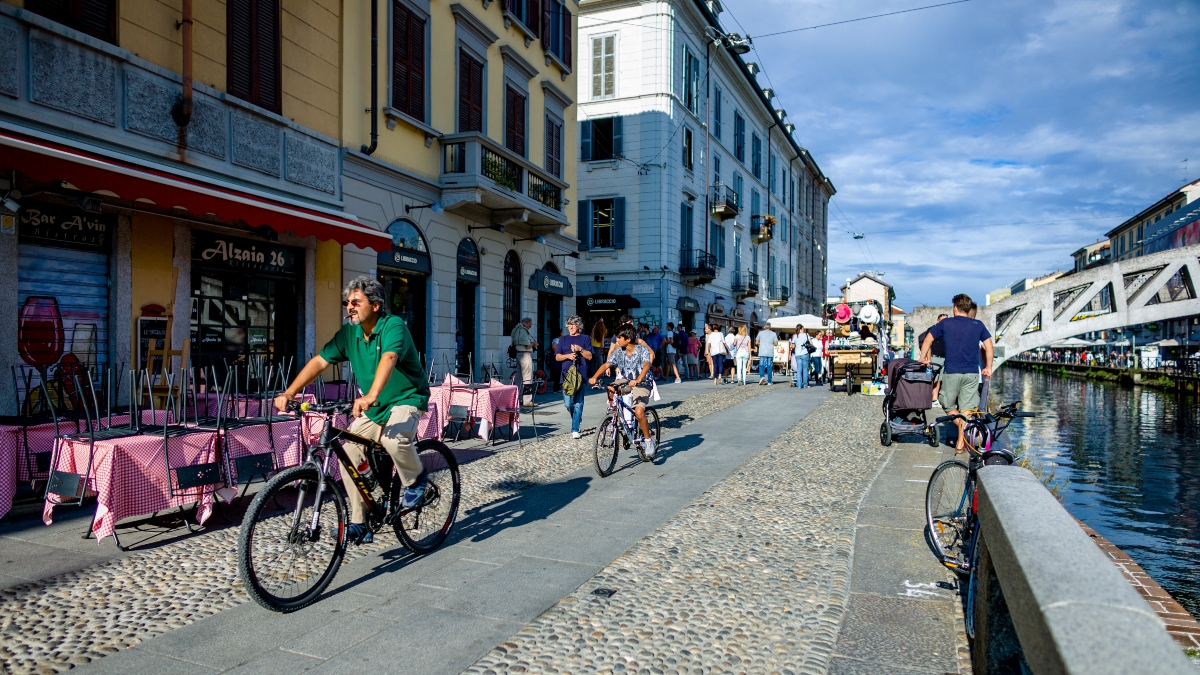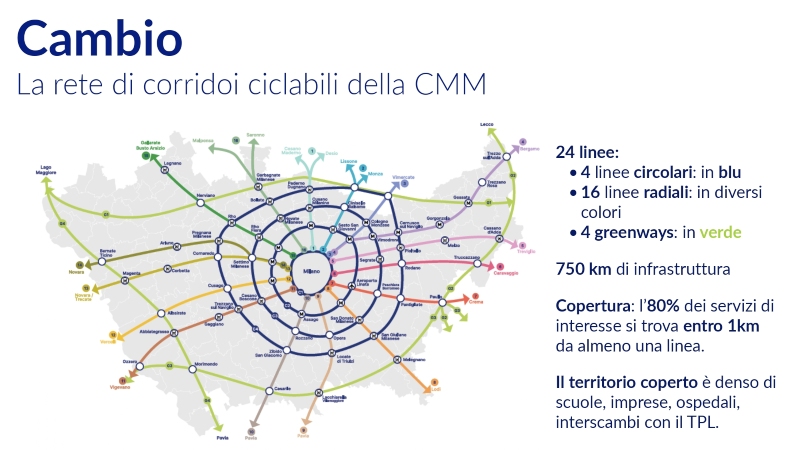
Cambio cycle network: Milan plans a real change towards more active mobility
The Metropolitan City of Milan has approved the Cambio cycling mobility plan. The ambitious project will build another 750 km of cycle paths by 2035, connecting the entire city and its surroundings.
Milan has approved an ambitious cycling mobility plan which will provide innovative infrastructure to the 2.6 million inhabitants of the Italian city of fashion. The Cambio bicycle plan will use advanced technology and an extensive network of cycle lanes to increase bike trips and help reach the city’s goal of a 20% modal shift to cycling.
The desire is to make Milan – a city often associated with smog, grey sky and car pollution – a metropolis where people can cycle to and from their everyday destinations in complete safety, while also improving air conditions and reducing environmental damage caused by the transport sector.
Mobility councillor for the Metropolitan city of Milan, Beatrice Uguccioni, observes that the main goal is to make the bicycle the most convenient mode of transport for everyone.
“Imagine being able to move around the whole metropolitan area on a bicycle,” stated Uguccioni, “to reach cinemas, schools, health centres and meeting places on innovative routes and to do so in complete safety”.
New infrastructure for smart solutions
On 29 November 2021, the Cambio biciplan was presented to the general public by the Metropolitan City of Milan in collaboration with Decisio, a Dutch consultancy in spatial economic research, and Studio Chiarini, an urban design studio who are active in sustainable mobility.
The plan’s state-of-the-art infrastructure will include a network of fibre optic cables for smart solutions, such as low-impact lighting (which light up at night as cyclists pass by and recharge during the day) and real-time information (thanks to displays placed along the routes). In addition, there will be dedicated bicycle-parking stations to secure a high share of use.
The Cambio biciplan will see the construction of 750 km of cycle paths to integrate and connect Lombardy’s capital city: 16 radial lines, four circular lines and four long-distance greenways will allow users to build their most suitable route to their destination, whether it is in Milan or its surroundings.
The numbers speak for themselves, as the new €225 million plan wants to bring people close to where they want to go. Within 1 km from any of its cycle paths, Cambio reaches: 86% of the resident population; 77% of the offices; 78% of workers; 79% of high schools; 83% of railway stations; 74% of healthcare centres; and between 69% and 85% of local businesses.
Key analysis
- Mobility data: Analysis has taken into consideration where people live and how they move within the metropolitan city.
- Attractive hubs: The network shall increase the use of bicycles in all segments of society by allowing each user to reach important hubs, such as schools, hospitals, railway and metro stations, business and commercial facilities conveniently and quickly.
- Guiding performance criteria: This includes homogeneity of routes, cruising speeds, distances between the various points of attraction, priority of cycling, sociability, safety, accessibility, travel comfort, attention to greenery and the territory crossed.
Regions:
Contact the author
Recent news!
Upcoming events
Contact Us
Avenue des Arts, 7-8
Postal address: Rue de la Charité, 22
1210 Brussels, Belgium










